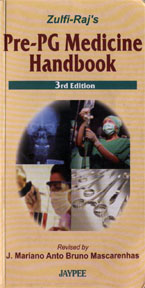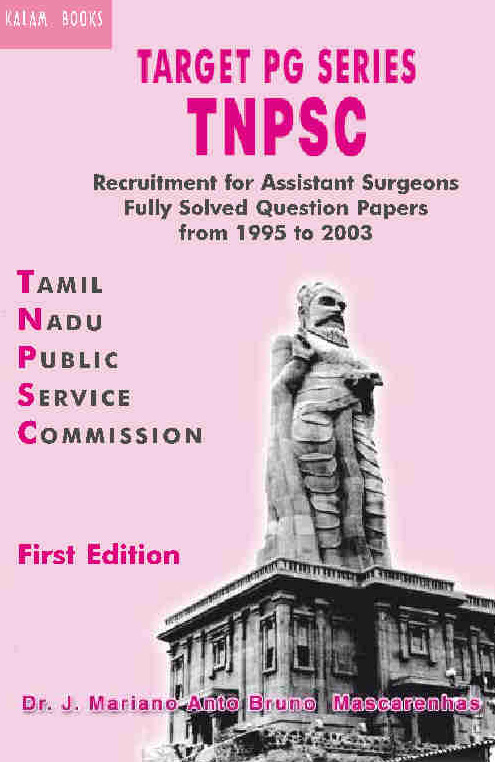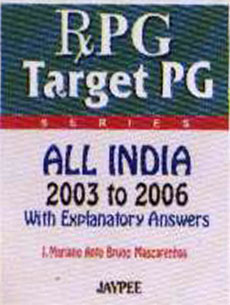SURGERY
199) Strawberry haemangioma is
a. Capillary Hemangioma
b. Cavernous Hemangioma
c. Arterial Hemangioma
d. Plexiform Hemangioma
Answer : (a)
Reference: Surgical Short Cases, S.Das, 2nd Edition Page 12
200) Most Common Neoplasm of Major Salivary Glands is
a. Pleomorphic Adenoma
Answer : (a) Pleomorphic Adenoma
Reference: Surgical Short Cases, S.Das, 2nd Edition Page 99
Bailey and Love 24th Edition Page 730
201) MC Parotid Tumour is
a. Pleomorphic Adenoma
Answer : (a) Pleomorphic Adenoma
Reference: Surgical Short Cases, S.Das, 2nd Edition Page 99
Bailey and Love 24th Edition Page 730
NOTE – The same question was asked twice in TNPG 2006
202) Parotid Gland is transversed by branches of
a. VII Nerve
b. IX Nerve
c. X Nerve
d. XI Nerve
Answer : ( a) VII Nerve
Reference: Bailey and Love 24th Edition Page 727
203) All are characteristic features of Gout except
a. Due to problems in Pyrimidine Degradation
b. Heberden’s node
c. Bouchard’s nodes
d. Metatarsophalangeal joint of the first toe is often involved
Answer : ( a) Due to problems in Pyrimidine Degradatio
Reference:
204) Occult Filariasis means
a. Microfilarie Not Seen In peripheral blood, but seen in tissues
b. Microfilarie Not Seen In tissues but seen in peripheral blood
c. Both
d. None of the above
Answer : ( d)
Reference:
Bailey and Love 24th Edition Page 164
Ä The term Occult Filariasis is commonly used to designate filarial infections in which mf are not found in the periphral blood although they may be seen in other body fluids and tissues. However, it has now been shown that in some cases with occult filariasis, mf may actually be found after more careful blood examination despite their low density. Occult filariasis is believed to result from a hypersensitivity reaction to filarial antigens derived from microfilariae.Only a very small proportion of individuals in a community where filariasis is endemic develop occult forms of the disease.
205) Asymmetrical Septal Hypertrophy with Myocardial disarray is seen in
a. VSD
b. ASD
c. HOCM
d. None of the above
Answer : ( c) HOCM
Reference: Braunwald Chapter 3 - echocardiography
Hypertrophy of the septum with abnormal organization of myocardial cells may be one of the basic abnormalities of HCM, and a key echocardiographic finding is disproportionate hypertrophy of the septum in relation to the posterior wall of the left ventricle, so that the ratio of thickness of the septum to the free wall exceeds 1.3:1.0 and the motion of the hypertrophied septum is reduced. It has also been shown that asymmetrical septal hypertrophy (ASH) is frequently transmitted as an autosomal dominant trait and that there are patients with asymmetrical septal hypertrophy who do not show SAM and therefore do not have obstruction to left ventricular outflow. These patients may be considered to have HCM without obstruction. While the concept of recognizing ASH with or without obstruction to left ventricular outflow by echocardiography is an important one, there are limitations to echocardiographic diagnosis. First, the thickness of the septum may be difficult to measure precisely echocardiographically. Second, it must be appreciated that ASH is not pathognomonic for HCM and related myopathies and can occur in a variety of other disease states, including right ventricular hypertrophy. In addition, some patients with HCM may have concentric rather than asymmetrical hypertrophy, in which the septal and posterior left ventricular walls are equal in thickness.
206) Ranula
a. ExtraVasation Cyst
b. Retention Cyst
c. Exudation Cyst
d. None of the above
Answer : ( b) Retention Cyst
Reference: Surgical Short Cases, S.Das, 2nd Edition Page 57
207) Prostatic Cancer in T2 Weighted Image presents as
a. Decreased Signal
b. Increased Signal
c. No Change
d. None of the above
Answer : ( a ) Decreased Signal
Reference:
208) Best Method Of Investigation of Gall Stone is
a. X Ray
b. USG
c. CT
d. MRI
Answer : ( b) USG
Reference:
Bailey and Love 24th Edition Page 1097
209) Cranio Facial Dysjunction is seen in
a. Lefort I Fracture
b. Lefort II Fracture
c. Lefort III Fracture
d. None of the above
Answer : (C ) Lefort III
Reference: Bailey and Love 24th Edition Page 667
210) All are true regarding Mobius Syndrome except
a. Bilateral Abductor Palsy
b. Bilateral Facial Palsy
c. Both
d. None
Answer : ( d)
Reference: Nelson 15th Edition Table 266.1 and Chapter 574
Ä The distinctive features of Möbius syndrome are congenital facial paresis and abduction weakness.
o The facial palsy is commonly bilateral, frequently asymmetric, and often incomplete, tending to spare the lower face and platysma. Ectropion, epiphora, and exposure keratopathy may develop.
o The abduction defect may be unilateral or bilateral. It is usually complete, and esotropia is common.
Ä The etiology is unknown. Whether the primary defect is maldevelopment of cranial nerve nuclei, hypoplasia of the muscles, or a combination of central and peripheral factors is unclear. Gestational factors such as trauma, illness, and intake of various drugs, particularly thalidomide, have been implicated. Some familial cases have been reported. Associated developmental defects may include ptosis, palatal and lingual palsy, hearing loss, pectoral and lingual muscle defects, micrognathia, syndactyly, supernumerary digits, or the absence of hands, feet, fingers, or toes. Surgical correction of the esotropia is indicated in selected cases, and any attendant amblyopia should be treated.
Ä In newborns, the first symptom is an inability to suck. Excessive drooling and strabismus (crossed eyes) may occur. Other symptoms may include lack of facial expression; inability to smile; feeding, swallowing, and choking problems; eye sensitivity; motor delays; high or cleft palate; hearing problems; and speech difficulties. Deformities of the tongue, jaw, and limbs, such as club foot and missing or webbed fingers, may also occur.
Ä Most patients have low muscle tone, especially in the upper body. Mental retardation may also occur. As children get older, lack of facial expression and inability to smile become the dominant visible symptoms.
211) Percentage of Cold nodes that are malignant
a. About 20 %
b. About 50 %
c. About 75 %
d. 100 %
Answer : ( a) About 20 %
Reference: Bailey and Love 24th Edition Page 785
212) Most common form of External abdominal hernia is
a. Inguinal
b. Paraumbilical
c. Incisional
d. Femoral
Answer : (a) Inguinal
Reference: Bailey and Love 24th Edition Page 1274
213) Enterofaecal Fistula which results in leakage of feces is due to
a. Persistent Omphalo Mesenteric Duct
b. Patent Urachus
c. Both
d. None
Answer : ( a) Persistent Omphalo Mesenteric Duct
Reference: Surgical Short Cases, S.Das, 2nd Edition Page 235
Omphalomesenteric Duct Remnants.
Ä Remnants of the omphalomesenteric (vitelline) duct may present as abnormalities related to the abdominal wall. In the fetus, the omphalomesenteric duct connects the fetal midgut to the yolk sac. This normally obliterates and disappears completely. However, any or all of the fetal duct may persist and give rise to symptoms.
Ä An umbilical polyp is a small excrescence of omphalomesenteric duct mucosa that is retained in the umbilicus. Such polyps resemble umbilical granulomas except that they do not disappear after silver nitrate cauterization. They may be associated with a persistent vitelline duct or umbilical sinus. Appropriate treatment is excision of the mucosal remnant.
Ä Umbilical sinuses result from the continued presence of the umbilical end of the omphalomesenteric duct. These resemble umbilical polyps, but close inspection reveals the presence of a sinus tract deep to the umbilicus. The morphology of the sinus tract can be readily delineated with a sinogram. Treatment is excision of the sinus.
Ä Persistence of the entire omphalomesenteric duct is heralded by the passage of enteric contents from the umbilicus. This is seen in the early neonatal period and should be treated promptly with laparotomy and excision of the duct to avoid intussusception or volvulus.
Ä Cystic remnants of the omphalomesenteric duct may persist and be asymptomatic for long periods of time. The cysts may be connected to the ileum with a fibrous band that is a remnant of the obliterated omphalomesenteric duct. Patients may present with acute volvulus and intestinal obstruction or with acute abdomen because of cyst infection. The cysts usually remain undiagnosed until operation, at which time they should be excised.
Ä Meckel's diverticulum results when the intestinal end of the omphalomesenteric duct persists. This is a true diverticulum of the intestine with all layers of the intestinal wall represented.
214) Paralytic Ileus is due to all except
a. Peritonitis
b. Hyperkalemia
c. Fracture Spine or Ribs
d. Abdominal Surgery
Answer : ( b) Hyperkalemia
Reference: Bailey and Love 24th Edition Page 1201
215) Mycotic aneurysm is an aneurysm infected because of :
a. Fungal infection.
b. Blood borne infection (intravascular)
c. Infection introduced from outside (extravascular)
d. Both intravascular & extravascular infection.
Answer (b) Blood borne infection (intravascular)
Reference: Harrison 16th Edition Page 1481 and
216) Laryngocele arises as a herniation of laryngeal mucosa through the following membrance:
a. Thyrohyoid.
b. Criciothyroid.
c. Crico-tracheal.
d. Crisosternal.
Answer a Thyrohyoid.
Reference: A Concise textbook of Surgery, 3rd Edition Page 623
217) The treatment of choice for the management of carcinoma of the anal canal is :
a. Abdomino perineal resection.
b. Primary radiotherapy.
c. Combined radio-and chemotheraphy.
d. Neoadjuvant chemotherapy and local excision.
Answer (c) Combined radio-and chemotheraphy.
Reference: Bailey and Love 24th Edition Page 1271
218) Which of the following drugs is not a part of the ‘Triple Therapy’ immunosuppression for post renal transplant patients?
a. Cyclosporine.
b. Azathioprine.
c. FK 506.
d. Prednisolone.
Answer (c) FK 506.
Reference: Tripathi 5th Edition Page 790 and Sabistons 15th Edition Chapter 20











No comments:
Post a Comment